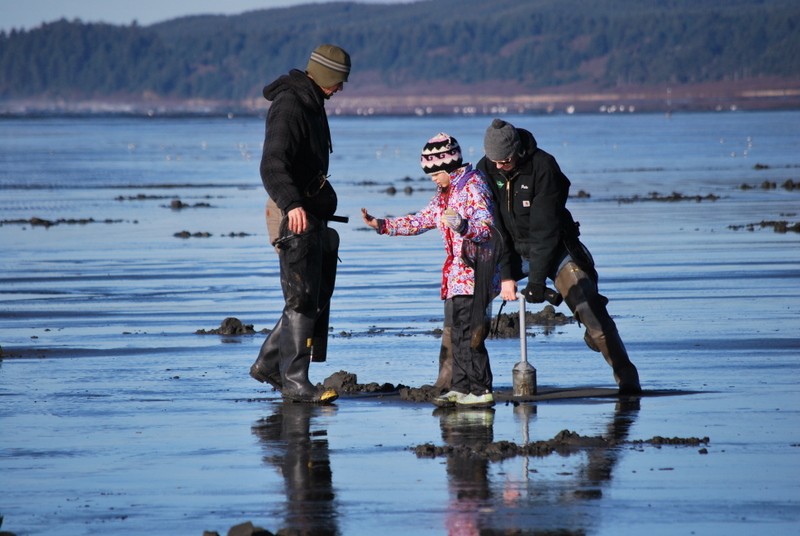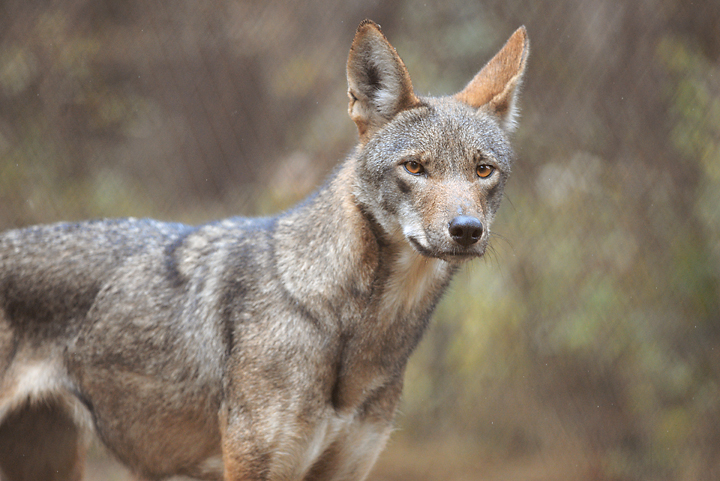Wolf Haven International, near Offut Lake in Tenino, has a rich history, dating back to 1982. During the past decades, the non-profit organization has helped more than 200 wolves. Wendy Spencer started as a part-time volunteer almost 18 years ago and has since become a fixture within the organization.
 As we walk around the wolf sanctuary, she tells me how Wolf Haven is changing for the welfare of their animals. “We’ve had this reputation of being a tourist attraction. For us, as a sanctuary, that’s not really in alignment with those values.” She tells me before their biggest fundraiser used to be a “Howl In” event which brought hundreds of people to the location. It was great to raise money, but very stressful on the animals.
As we walk around the wolf sanctuary, she tells me how Wolf Haven is changing for the welfare of their animals. “We’ve had this reputation of being a tourist attraction. For us, as a sanctuary, that’s not really in alignment with those values.” She tells me before their biggest fundraiser used to be a “Howl In” event which brought hundreds of people to the location. It was great to raise money, but very stressful on the animals.
Wolf Haven as a Sanctuary for Animals
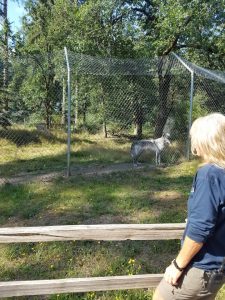
These days Wolf Haven fundraises in different ways and have changed their openness to the public. They take reservations for guided tours now, on Friday through Monday, with a limited number of visitors. Wendy says it’s been hard for some people to understand because they are used to a zoo environment. Wolf Haven is really quite different. Large groups of people and loud noise is not positive for the animals.
During a public tour, only a select number of wolves are visible, because many of their animals can’t handle the multiple interactions with strangers. Currently they have 53 animals – most have arrived through private owners. “People think it’s such a cool thing to have a wolf as a pet and invariably it doesn’t work out the way they think it will,” Wendy says.
Because many of the wolves have been around humans their whole lives, it’s a completely different scenario when they get to the sanctuary. “You take these animals who have basically checked out. Many of the animals that are here have been neglected or exploited by people.” Wendy says they crave human interaction, and although they give them some, it is limited. “You give them a companion, a safe place to live, good food, and just let the wolves be. It’s a beautiful thing.” She explains further that the end goal is to get the wolves back to as close to a natural setting as possible. “To us a success story is when the wolves are not craving human attention. Eventually most of them get to that point.”
Breeding Programs at Wolf Haven International
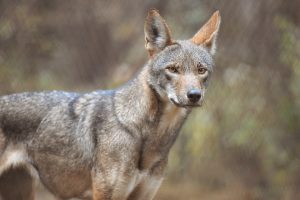
Aside from providing a safe haven for wolves, Wolf Haven also is part of two federal breeding programs. One program is housing Mexican grey wolves whose native area is in the Blue Mountains and Gila National Forest, in the southwest United States. The other program, centered from Point Defiance Zoo and Aquarium, is focused on the red wolf population, which is native to North Carolina. Both wolf breeds come to the sanctuary on loan from Fish and Wildlife Services.
Every year is different depending on the genetic needs of the program Wendy tells me. Recently, they saw the birth of five red wolf pups in the month of May to parents only just paired together this year. “We don’t decide which animals breed or when. It’s dependent on the needs of the program.”
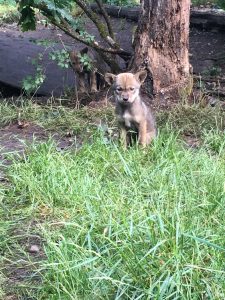
Wendy says the programs for these specific wolves focuses on creating a genetically diverse population. “Ideally we serve as a reservoir for the free-ranging population. In the event that something catastrophic happened we’d have captive stock to draw on.” She adds that the Mexican wolf population has become almost inbred in the wild. The federal program adds much needed diversity to their bloodlines.
Wendy tells me that some may find it counter-intuitive for a sanctuary to breed animals at all, but it’s only for these specific programs. And these wolves don’t remain at their facility. All permanent residents are paired in a male-female combination, but don’t breed, and are in fact altered to ensure it doesn’t happen.
Whether she’s working with her permanent residents, Mexican grey wolves, or red wolves, Wendy gets so much more back from them. It’s what has kept her here all these years, and what will keep her coming back. “You see these animals and even if you’re just making a difference for those animals, that’s such a gift. You take these animals that have come to us broken and watch them regain a sense of self. How could you not want to be a part of that?”
For more information, or to arrange a tour of Wolf Haven International, visit their website or Facebook page.



























